Comprised of a hybrid culture including Iranian and Chinese influences, and a religion that is a mix of Zoroastrianism and other traditions, it’s easy to see how Uzbekistan was the embodiment of a historical melting pot.
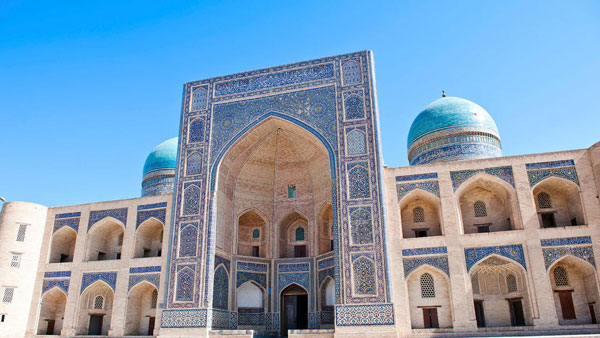
(Image source: www.gadventures.com)
Located in Central Asia, East and slightly north of Turkey, Uzbekistan is landlocked by neighboring Kazakhstan, Kyrgyzstan, Tajikistan, Turkmenistan and Afghanistan. The landscape is a combination of deserts and snowy mountains, rivers and completely dry lands with historically grand cities dotted throughout.
And, these grand Uzbeki cities have seen their fair share of history.
Uzbekistan’s History
Conquered by Alexander the Great, terrorized and ruled by Genghis Khan, and located at the heart of the Uzbekistan Silk Road, famous Uzbeki cities such as Samarkand grew in wealth as they participated in global trade. This meant trading everything from paper, glass, gunpowder, and spices to dogs, drugs, and unfortunately—slaves.
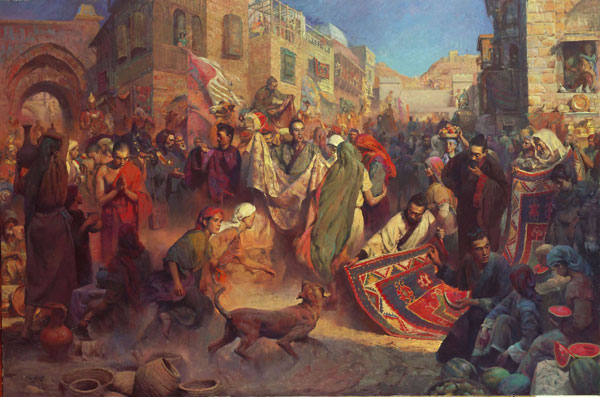
(Image source: www.lagranrutadelaseda.com)
Samarkand was so influential at the time that the Silk Road was often referred to as “the road to Samarkand”, as it was one of the richest and most well-known cities on the route. It truly was a mid-point between Iran, India and Central Asia, even lending its native language—Sogdian—as the lingua franca along the trade routes leading east into China.

(Image source: www.turbina.ru)
The country fell to Islam in the eighth century, saw the coming and going of the Mongolians, and became a far-reaching empire by the 14th century. The empire then dissolved into separate Islamic kingdoms known as the khanates and emirates, which both eventually yielded to 67 years of Soviet rule before the country’s fateful independence in 1991.
All of this rich history brings us to the unique Uzbekistan of today—a fascinating mix of cultures, infectiously warm and hospitable people, and a wealth of intricate ethnic crafts that are continually preserved and celebrated.
Old and New, Ancient and Modern
When visiting Uzbekistan, what immediately stands out is the contrast between old and new, ancient and modern. While sipping on your iced coffee, you can stroll through the streets of the old city of Bukhara and marvel at the clay-brick domes above head, dating back to medieval times.
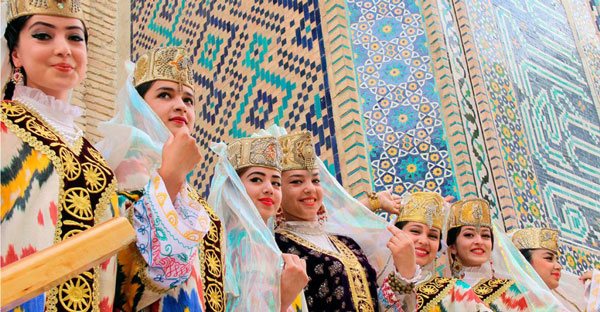
(Image source: www.uzbekistan.travel)
As local tour guide, Mubashira Bahshilova, describes in this article, “You can still sense Bukhara’s atmosphere and its colors from when this ancient city was a big trading center on the Silk Road. Even today, under those trading domes, they still sell what was brought here hundreds of years ago, as well as the typical locally handmade goods.”
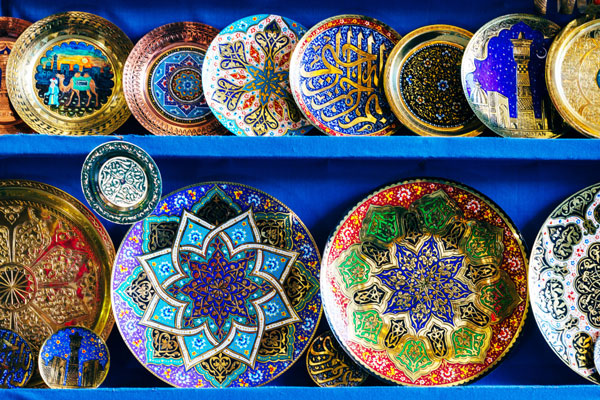
(Image source: www.thejigsawpuzzles.com)
It is also evident that Uzbekistan’s population of 32 million practice a more casual, secular strain of Islam, compared to the fanatical version which is frequently displayed in Western media outlets.
This is no surprise. The region has a history of religious coexistence—as you can see through the Christian crosses and Jewish stars that debut in the tile work of many mosques and madrassas throughout the country. This speaks to the earlier days along the Silk Road where the three major religions shared mutual cordiality.
Art and Culture
Uzbeki culture and traditions date back to the 6th and 7th centuries BC. What’s interesting is that despite the continuous influx of invaders and conquerors, Uzbekistan’s traditions have remained almost unchanged. The people carefully maintain and pass on these valuable cultural gems from generation to generation.
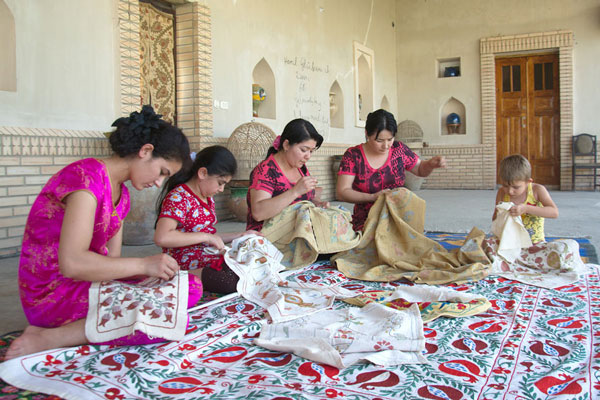
(Image source: www.advantour.com)
These centuries old customs and traditions are based on their deep-rooted belief in the principles of hospitality, respect for elders, and collectivism, and can be seen most widely displayed during major family celebrations such as weddings and births.
Additionally, the stunning traditional handicrafts dating back to ancient times are still practiced today.
In Tashkent, you can visit the charming Museum of Applied Arts, where you’ll see a range of well-curated major handicrafts from the last hundred years. In Bukhara, you’ll be able to purchase what’s known as “suzani”—pillow covers, bedspreads and tablecloths—ikat, carpets, traditional ceramics, handmade knives, and intricate miniature paintings.

Another famous craft center is Khiva, well-known for its camel and sheep-fur hats, which are traditionally worn by nomads. The city also has a strong wood-carving tradition, where they craft pencil boxes, bookstands, pillars, and beds that can be shipped! The Khiva Museum of Wood features 210 magical carved wood pillars, some even dating back a thousand years. The space is sky-lit and a must see on your Uzbekistan itinerary.
